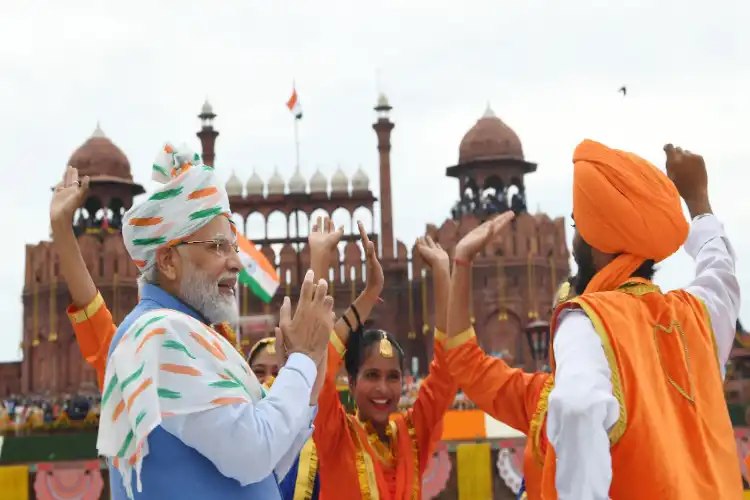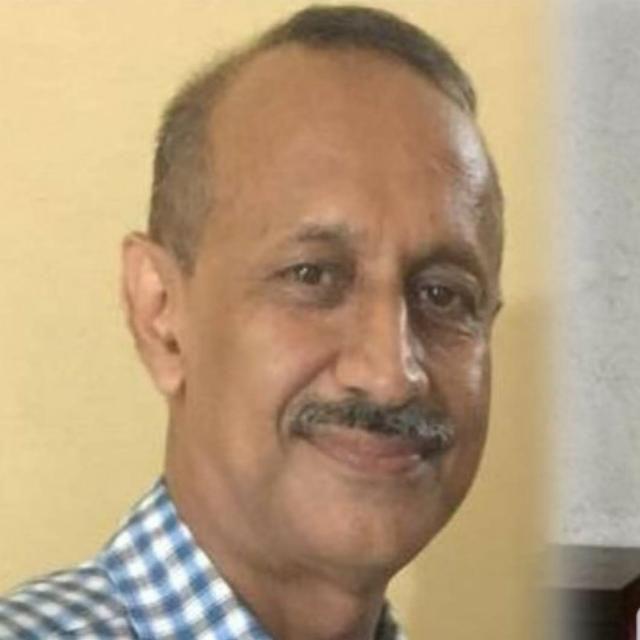
 Pallab Bhattacharyya
Pallab Bhattacharyya
Laying down five resolutions for Indians to fulfill as the country enters the ‘amrit kaal’, Prime Minister Narendra Modiin his Independence Day speech from Lal Qila on the Independence Day said that we must work towards a ‘viksitbharat’ (developed India).
Calling it the ‘panchpran‘ — the five resolutions to help India become a developed nation in the next 25 years — he said, every Indian should focus on developing the country; 100 percent freedom from slavery (100% Azadi from Ghulami), taking pride in Indian heritage; ensuring importance is given to unity and integrity and every citizen should be responsible.
The Central Vigilance Commission has declared the theme of Vigilance Awareness Week-2022 as “Corruption-free India for a developed nation”. Furthermore, this year is 'Independent India@75 and so Self Reliance and Integrity should be the cornerstone for a developed India in conformity with the PM’s pledge propounded in his Independence Day speech.
It is important to note here that the observance of Vigilance Awareness Week throughout India was first conceived of, in the year 2000, when N Vittalwas the Chief Vigilance Commissioner who had expressed as follows: “Corruption is anti-national, anti-poor and anti-economic development. According to the UNDP Report on Human Development 1999 on South Asia, if the corruption level in India goes down to that of Scandinavian Countries, the GDP will grow by 1.5% and Foreign Direct Investment will go up by 12%. Corruption is anti-poor because nearly 30% of the food grains and sugar meant for the public distribution system disappear in the black market. Corruption takes away the food from the mouths of the poor people for whom food security by way of the public distribution systems is devised by the government. Corruption is anti-national as revealed by the Bombay blasts of 1993 when the customs officials who were bribed permitted the smuggling of the RDX which resulted in the death of 300 people.”
It was decided to celebrate the week every year in the birthday week of Sardar Vallabbhai Patel, often referred to as the 'Bismark of India'. Patel was born on October 31st and is hailed as a man of high integrity and honesty. The three attributes of corruption as per CVC were "anti-national", "anti-economic development" and "anti-poor" and to create a bulwark to prevent these nefarious tendencies to creep into the government agencies is the purpose of the celebration of the week.
If we study the history of the evolution of CVC as the apex body of anti-corruption measures in the country it is clear that it was set up by the Government in February 1964 on the recommendations of the Committee on Prevention of Corruption, headed by K Santhanam. Subsequently in the year 2003, the Parliament enacted CVC Act conferring statutory status on the CVC.
If we analyse the causes of corruption in India we may highlight it under political, economic, Administrative and social, and ethical reasons.
Use of black money in elections, criminalization of politics making lawbreakers become lawmakers with rule of law as the first casualty, and the unholy nexus between politicians and businessmen who became prominent players after the introduction of liberalization measures, etc constitute the main political causes.
In India, more than 80% of the workforce is in the informal sector and therefore does not come under the ambit of tax or labour laws. Such enterprises usually bribe officials to keep out of the ambit of laws where compliance is costly and complex. Moreover, in India, 1% of the rich hold about 60% of the total wealth. At the upper-income levels, it leads to crony capitalism, at lower-income levels, it forces people to bribe the officials even to get their basic needs fulfilled. The lengthy procedure of approvals required to start a business with no transparency and legal accountability related to matters such as time limits force the entrepreneurs to overcome the red tape through bribery. Thus the high share of informal sectors, difficulty in ease of doing business, and high inequalities constitute the Economic causes of corruption.
Continuance of colonial bureaucracy, failed reforms like citizen charter, RTI, e-governance, etc, low wages, constitutional safeguards granted to civil servants under Articles 309, 310, and 311, and judicial failures constitute the Administrative reasons for the thriving of corruption.
Social and ethical reasons may be summarised as a change in lifestyle in the form of an increasing shift towards individualization and materialism, social discrimination of the weaker sections by corrupt officials, and failure of the education system. The lifestyle changes induced by globalization have further degraded the moral fabric of society.
The government has taken several measures to eradicate corruption which can briefly be summarized as follows (i) Legal steps-Prevention of corruption Act 1988, Benami property Act, Central vigilance commission act 2003, Right to Information act, 2005, Whistleblower protection Act 2014 and Lokpal and Lokayukta Act 2013 (ii) Administrative steps-E-governance initiative, Citizen’s Charter and Public Service Delivery and Grievance Redressal Acts (iii) Economic steps-Liberalization and Privatization, GST and Demonetization (iv) Electoral steps-Putting a cap on cash donations, introduction of disclosure norms by candidates, judicial intervention of speeding up of cases against political candidates, the introduction of Electoral Bonds.
However, lack of political will to bring serious electoral, administrative, and legal reforms, misusing the various laws enacted for political gains, the inability of e-governance initiatives to empower citizens, the inability to carry on functioning of bureaucracy without political interference, etc are at the root of the failure of above reforms. India ranked 85 among 180 countries in the Corruption Perception Index (CPI) in 2021 (86 in 2020 and 80 in 2019) indicating its high level despite the political proclamation of its eradication.
The CVC has initiated several steps for corruption free dealing in government activities. For this year the primary direction of the Commission to Government Departments and PSUs are (i) Integrity Pledge for the organization highlighting ethical business practice, non-acceptance of bribes, transparency in dealings, grievance redressal, protecting the whistleblowers, protection of rights of stakeholders, etc. Online e-pledge is also encouraged (ii) 3 Months campaign on preventive vigilance from 16-08-22 to 15-11-22 laying stress on (a) Property Management-National Land Monetization Corporation, a Special Purpose Vehicle (SPV) announced in the budget of 2021-2022 to monetize unused/surplus lands of the PSUs (b) Management of assets (c) Record management (d) Technological Initiative-website maintenance &updation and Identification of new areas for service delivery for customers/staff to be brought on online portal and initiation of steps for creating online platform (e) Updation of guidelines/circulars/manuals (f) Disposal of complaints outstanding as of 15/08/2022 (g) Conducting activities relevant to the theme- ”Corruption-free India for a developed nation” with maximum public participation and conducting outreach programmes to sensitize public about the need for transparency & integrity in public governance-Integrity Club initiative in the schools (h) Workshops for employees & other stakeholders on policies of the organization on preventive vigilance.
As a move to strengthen mechanisms of Participative Vigilance, the Commission, in a first-of-its-kind exercise invited suggestions during VAW 2020 from citizens on systemic improvements that they would like to see implemented. This was also done to involve stakeholders in decision-making processes and reforms taking place in the government. A committee of seven officers was constituted in the Commission to analyse these suggestions, discuss the different ideas therein and take the different issues up with the concerned government organizations. (SIC-Systemic Improvement Committee)-SUGGESTIONS were categorized as General/Miscellaneous, IT, Personnel, Vigilance, Financial, Central Technical Examiners/Technical
In addition to the above initiatives, there were efforts for systemic improvement through (i) Government Organizations (RailTel, CONCOR, ONGC, IOC, DVC, NMDC, NHAI, PNB, NTPC, Electronic Corporation of India, AICTE). (ii) Capacity Building-General Training, Training Modules for CPSE, PSB, Small Groups, Large Groups, Mid-Career Modules (iii)Attitudinal Changes and Ethics-DMRC, Rural Self-Employment Training Institute (RSETI-SBI), NDDB Module (iv) CTE IEW (v) New Initiatives-Mentorship, Exit Interviews(CAG Report in presence of CVOs)
ALSO READ: Tackling radicalization in the land of Sankar-Azan
The activities suggested by CVC over the years indicate its support to the pronouncement of Angel Gurria, Secretary General OECD “Integrity, transparency and the fight against corruption has to be part of the culture. They have to be taught as fundamental values”
(Writer is a former Director-General of Police, Special Branch, and ex-Chairman, APSC. Views expressed by him are personal.)
